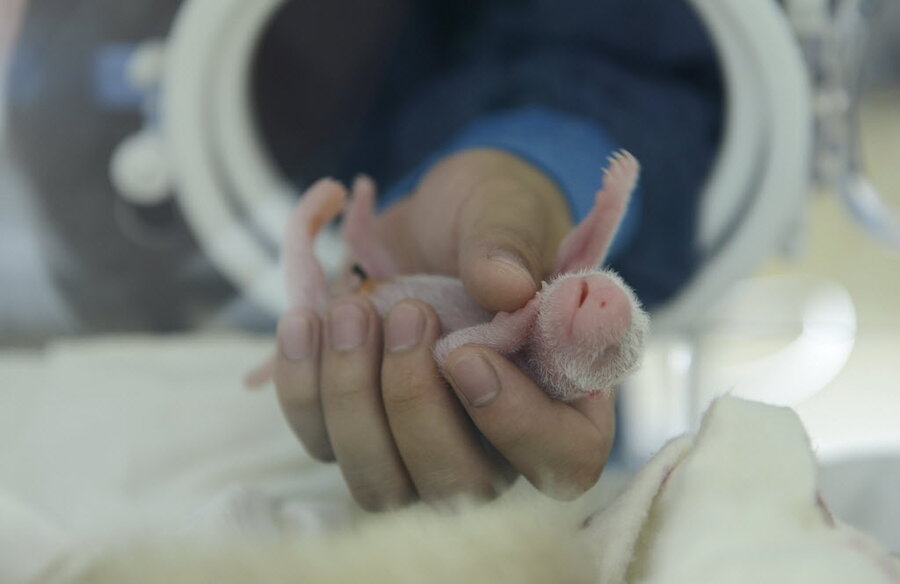Giant panda gives birth to twin cubs in China
In the animal kingdom, this birth was royal.
A giant panda gave birth to twins in China on Saturday, the first pair of the rare species to be born this year, The Telegraph reported.
Born to panda-mother Haizi in Sichuan province’s Wolong Nature Reserve, in China's southwest, the two cubs join just some 1,900 pandas worldwide (including about 300 endangered animals in captivity).
"This is the first time a giant panda has given birth to twins, anywhere in the world, this year," conservation expert Liu Chunhua told The Telegraph.
While panda twins are not unusual, they pose special challenges because panda mothers tend to ignore one of the twins. But the Chengdu Panda Breeding Research Center in China has had success in boosting the survival rate of twins by secretly swapping them. The BBC reports:
"Whenever a cub was abandoned after birth, keepers at the Chengdu centre swiftly moved it to an incubator. Panda mothers were tricked into caring for twins as staff stealthily rotated them between their mother and the incubators. The survival rate of cubs rose to 98% through this combination of maternal care and artificial support."
Generally, pandas are difficult to breed, especially in captivity. Female pandas are fertile for only about two or three days a year. Haizi became pregnant after conservationists introduced her to male pandas Bai Yang and Yi Bao in March.
Staff at the reserve have not yet been able to determine the gender of the first-born cub, as its mother is still cradling the baby animal in her arms. But staff have said that its sounds and apparent size suggest that it is healthy.
The second cub, born some 10 minutes after its sibling, is a female cub weighing under 79.2 grams. That puts the little pink infant at about 1/900 the size of its mother.
The giant panda, the WWF’s mascot animal, is an international symbol of conservation efforts. Efforts to protect its dwindling forest habitat in China and to rescue it from poachers have surged in recent years, with the Chinese government establishing more 50 panda reserves within some 45 percent of the giant panda’s habitat. Still, some 40 percent of China's pandas do not live in protected zones.






